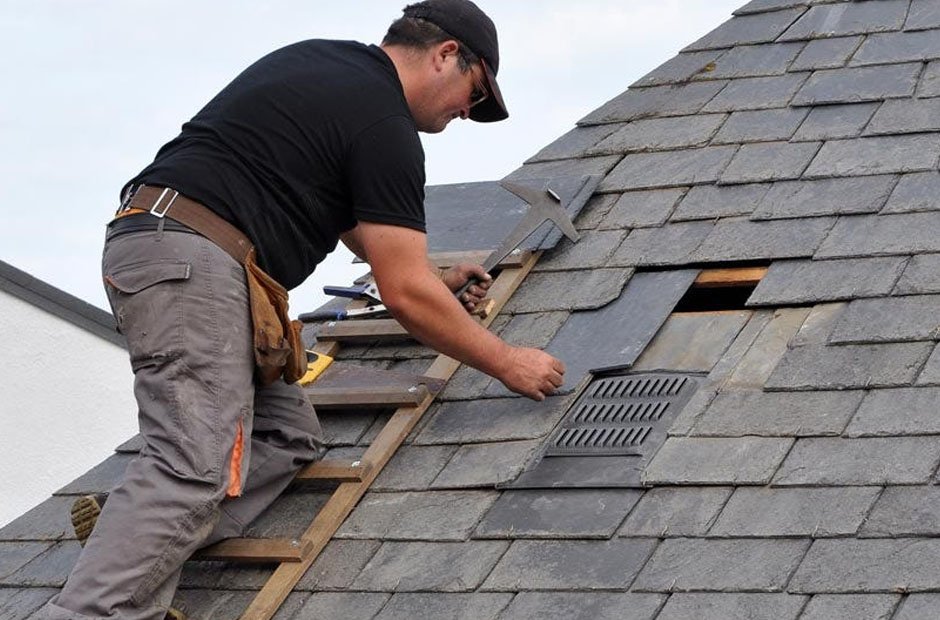Emergencies can strike at any time, and when it comes to your roof, quick and effective action is crucial to prevent extensive damage to your home. Whether caused by severe weather, falling debris, or sudden leaks, emergency roof repairs require immediate attention to safeguard your property and maintain its structural integrity. We will outline the steps homeowners should take when faced with an emergency roof repair, from initial assessment to temporary fixes and seeking professional help. Understanding these steps will help you manage roof emergencies efficiently and minimize potential damage.
Table of Contents
Initial Assessment and Safety Measures
The first step in handling an emergency roof repair is to assess the situation while prioritizing safety. Before inspecting the damage, ensure that the area is safe to enter. Avoid going onto the roof during severe weather conditions or if there are visible hazards such as fallen power lines or unstable structures. Instead, inspect the damage from a safe distance or from within your home.
Identify the source and extent of the damage. Common signs of roof damage include missing or broken shingles, visible holes, water stains on ceilings, and wet insulation in the attic. Document the damage by taking photos or videos, which can be useful for insurance claims and when consulting with a St. Charles Roofing contractor. Additionally, note any immediate risks, such as water leaking into the living space or potential structural weaknesses.
Once you have assessed the damage, take measures to protect the interior of your home. Move furniture, electronics, and other valuables away from the affected area to prevent water damage. Place buckets or containers under leaks to catch dripping water and minimize further damage to floors and walls. If the weather permits, you can also use a tarp or plastic sheeting to cover exposed areas and prevent additional water from entering your home.
Temporary Repairs to Prevent Further Damage
Temporary repairs are essential to prevent further damage until a permanent solution can be implemented. One of the most effective temporary fixes is to cover the damaged area with a tarp. Ensure that the tarp extends beyond the damaged section and secure it with nails, screws, or heavy objects to keep it in place. This temporary measure can help keep water out and protect the interior of your home.
For minor leaks, roofing tape or sealant can provide a quick fix. Roofing tape is designed to adhere to various roofing materials and create a waterproof seal. Apply the tape or sealant over the leak, ensuring the area is clean and dry before application. While these solutions are not permanent, they can buy you time until a professional can assess and repair the damage.
If you have missing or broken shingles, you can temporarily replace them to prevent water from seeping into the roof structure. Use roofing nails to secure new shingles, ensuring they overlap correctly with existing shingles. For damaged flashing around chimneys, vents, or skylights, you can use roofing cement to seal gaps and prevent leaks. These temporary measures can help mitigate damage and protect your home from the elements.
Seeking Professional Help
While temporary repairs can provide immediate relief, seeking professional help for a thorough assessment and permanent repair is crucial. Contact a reputable roofing contractor as soon as possible to schedule an inspection. Professional contractors have the knowledge, experience, and equipment to handle emergency roof repairs safely and effectively.
When choosing a contractor, prioritize those who offer emergency services and have a track record of reliable and timely responses. Look for contractors with positive customer reviews and a history of satisfied clients. Ask for recommendations from friends, family, or neighbors who have dealt with similar situations. Additionally, ensure that the contractor is licensed and insured, which protects against accidents or damage during the repair process.
During the contractor’s inspection, discuss the extent of the damage and the recommended repair options. Obtain a detailed estimate that includes the scope of work, materials, timeline, and cost. This information will help you make an informed decision and ensure the repair process proceeds smoothly. Once you have selected a contractor, schedule the repair work as soon as possible to prevent further damage and restore the integrity of your roof.
Filing an Insurance Claim
If your homeowner’s insurance policy covers your roof damage, filing a claim can help offset the repair costs. Contact your insurance company immediately after the damage occurs to report the incident and initiate the claims process. Provide the documentation you collected during your initial assessment, including photos, videos, and notes on the extent of the damage.
An insurance adjuster will likely need to inspect the damage to assess the claim. Be prepared to provide access to the damaged areas and answer any questions the adjuster may have. Having your roofing contractor present during the adjuster’s inspection is also beneficial to ensure that all damage is accurately documented and included in the claim.
Review your insurance policy to understand the coverage limits, deductibles, and any specific requirements for filing a claim. Keep detailed records of all communications with your insurance company, including dates, names, and summaries of discussions. This documentation can help expedite the claims process and ensure you receive the appropriate compensation for your roof repairs.
Conclusion
Emergency roof repairs require swift action, careful assessment, and temporary fixes to mitigate further damage. By prioritizing safety, implementing temporary repairs, and seeking professional help, homeowners can manage roof emergencies effectively and protect their property. Additionally, filing an insurance claim can provide financial assistance for repair costs, making restoring the roof to its original condition easier. Understanding these steps and being prepared for potential roof emergencies can help homeowners confidently navigate these situations and minimize the impact on their homes.










